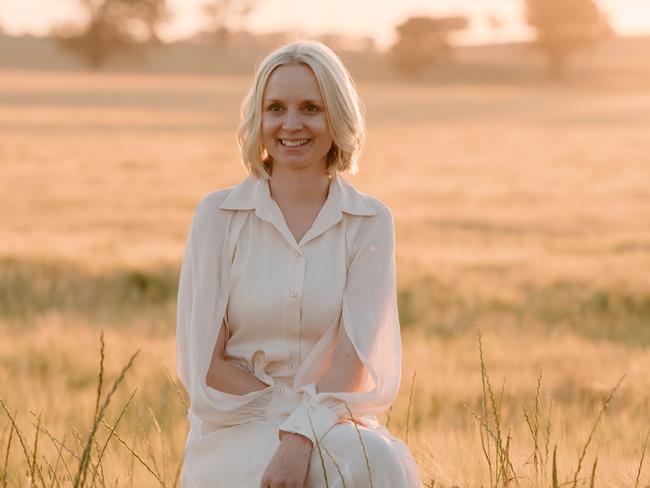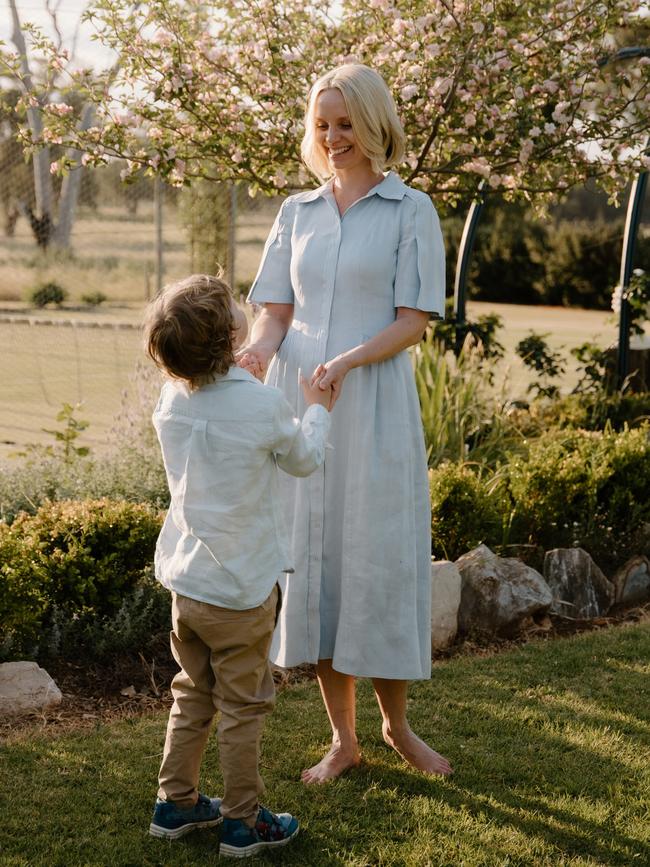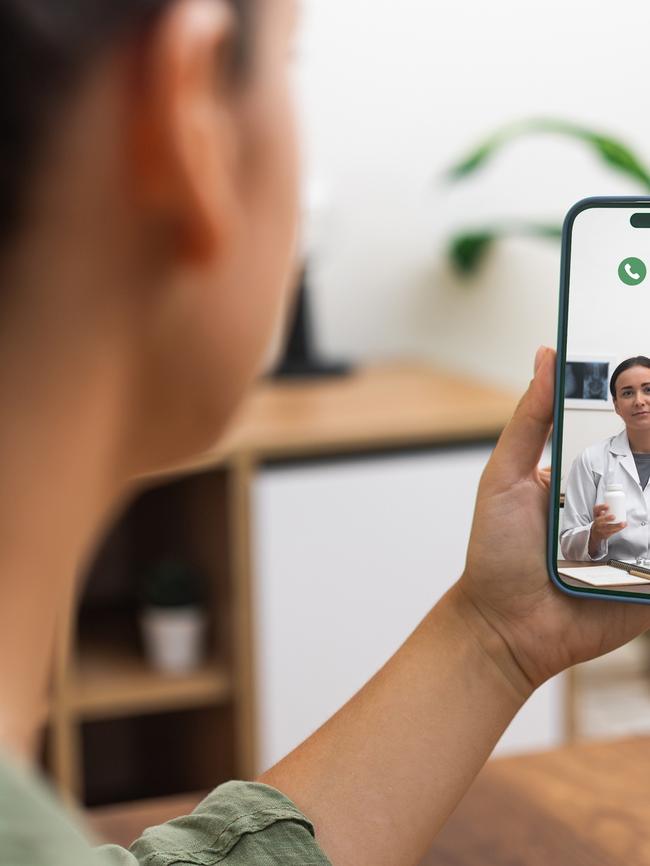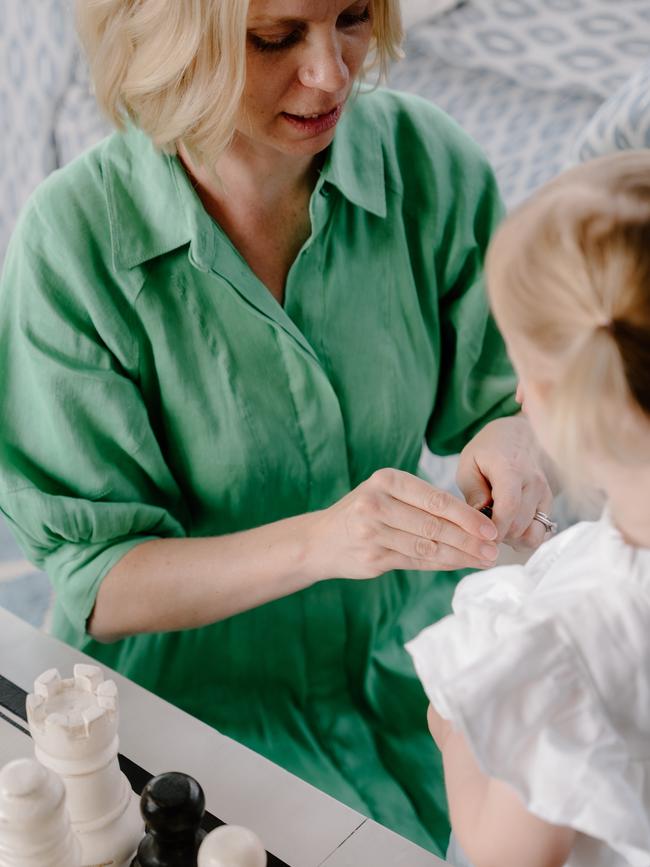The life-or-death reality of a shameful country-city health divide
Driving 10 hours for an appointment that took six months to get, or a $700 telehealth consult? The waits, lack of doctors and mental health gaps expose a rural health system on life support.

Regional News
Don't miss out on the headlines from Regional News. Followed categories will be added to My News.
Driving more than 10 hours for appointments that can take six months to get, or forking out $700 for a telehealth consult doesn’t feel like much of a choice.
But that’s a harsh reality facing already struggling rural communities as the city, country health divide reaches alarming levels.
Paediatricians books are closed. Psychologists books are closed.
Families are desperate – and they just can’t wait anymore.
They need your help.

Dubbo psychologist and mother-of-two Dr Tanya Forster grew up in the central west, went away to study in Newcastle where she met her husband, and then moved back to where it all began.
It was never the plan, she laughs – but here she is. And she’s spent the last 15 years treating locals for issues that are only getting worse.

She lives on a picture-perfect 4050ha sheep and wheat farm, and understands the struggles people are facing in the health care and NDIS systems, as latest data from the National Rural Health Alliance shows the shameful reality of the healthcare divide.
Figures show people living outside major cities suffer worse health outcomes and shorter lifespans, living on average a decade less than their peers in the city, thanks to the tyranny of distance.
Forster is the founder of multidisciplinary health practice Macquarie Health Collective, where she has a team of 25 general practitioners, psychologists, allied health providers and even teachers – and now the rural advocate is sounding the alarm on the carve up of government funding for health, the state of bulk billing, the worsening doctor shortage and state of the NDIS.

Data shows the rate of emergency presentations was 548 per 1000 people in regional and remote areas, compared to 311 per 1000 in cities as the doctor shortage sees communities experience longer wait times to see a GP. The chronic and growing issue is of course Australia-wide, but felt hardest by people in regional areas who face geographical discrimination. It’s a hard pill to swallow when there are so many positives to a country upbringing.
“I really do think it is a great place to raise a family – we have lots of room to move, lots of green, lots of wide open spaces and I think when you have little ones I just think it’s so perfect to have that regional location and that extra space and particularly being on the farm … obviously that’s really fun for little ones – it’s a great place to grow up,” Forster says.
The trouble is, if you need help you can’t get it. And for her, giving help is hard too – the demand is too great and there aren’t enough doctors to go around. One local woman says it took two years for her granddaughter to get into a pediatrician, because she wasn’t considered “high needs” enough. At 13, that teen has now had five different psychologists and counting because they don’t stick around.

“Imagine what families are facing when they’re told no psychiatrist or pediatrician in the region has their books open, and your only option is Sydney, or paying $700 for a telehealth,” Forster says. “There are some pretty ridiculous fees going. Families are literally driving to Sydney – so for families around me that might be a five-hour drive, but you head further west, it doesn’t get any better.
“So families are travelling ridiculous distances to access any support because they just can’t get it locally. They are calling in tears, desperate for help.
“My poor reception team,” she continues.
“Families are really struggling … and going to great lengths to get the help that they need – and it shouldn’t have to be that hard.
“It’s just not OK. We need to make sure that we have the support available for families no matter where they live.”
LIFE OR DEATH
These are life or death issues that are affecting close to 10 million people. Analysis of recently released Australian Bureau of Statistics data by the Regional Australia Institute shows the number of people living in the regions increased from 9.78 million in 2023 to 9.91 million in 2024 – a growth rate of 1.3 per cent over the past 12 months and 6.3 per cent since 2019.
The National Rural Health Alliance’s Rural Health in Australia Snapshot 2025 was a wake- up call when released in February, with experts calling on urgent action then – and it’s easy to see why.

Among key findings was that men in very remote areas were found to be dying up to 13.6 years earlier, and women up to 12.7 years earlier, than those in metropolitan areas. All areas outside of major cities experienced higher rates of preventable hospitalisations, stretching up to three times higher in remote areas. Potentially avoidable deaths were 2.5 times higher in males and 3.7 times higher in females in remote areas.
As anyone who lives in the country will tell you, GP access was a key issue. The report found that some 18,405 people in remote and very remote Australia lacked access to primary healthcare services within an hour’s drive from home. And even if they do, chances are you can’t get in.
“Having moved away to study, coming back, I think I have a really good sense of the challenges that regional people in regional communities face – having been based there most of my life but also in my role as a psychologist and the owner of the medical practice,” Forster continues.
“Obviously, we have significant access issues to the services that we need -particularly healthcare services – and that was the whole reason for me starting the practice that I have, because I wanted to make sure that no matter where you live, you have access to the healthcare that you deserve to be able to access in Australia.

“We have such a world-class healthcare system and I wanted to make sure that regional communities had access to that really holistic, collaborative care which is what my practice is built on because unfortunately, access to those sorts of services can be really hard for regional communities.
“Then, if you add to that the mental health barriers that people have as in access to services – either books are closed or wait times for psychologists are in excess of six months. So we spend all this time encouraging people to break the stigma and to reach out and seek support, but then when they finally get the courage to do that, we say, ‘thanks so much, that’ll be six months before we can help you’ – and I just think that’s not okay.
“If we think about even just the last few years – we’ve had a pandemic, we’ve had multiple natural disasters – we’ve got fires, we’ve got droughts, we’ve got floods. And now, there’s cost of living pressure.
“Communities are really stressed.
“We don’t want to say no to people, that that’s a six-month wait, but there’s only so much individually we can do. Of course it never feels good having to turn people away.”
Forster says one silver lining of Covid was the ability to master telehealth offerings – but, at the end of the day, nothing can compare to physical connection, particularly when isolation is already such an issue.

“What we have to remember here is that on top of all the other stresses, we also have geographical distance – so we have face-to-face consultations and we also offer telehealth services because prior to telehealth being available, people would travel four hours one way to come and have a consultation with me,” she says.
“Can you imagine driving four hours to then have a 50-minute consultation? Even if I think I’m good at my job, I’m not that good to be worth a four-hour drive.
“We are still biologically wired for connection, so people want face-to-face service a lot of the time understandably.”
TWO—YEAR PEDIATRICIAN WAIT
Dubbo teacher Pauline grew up in regional NSW. She raised her children here, now the 68-year-old is raising three of her grandchildren here – and her inter-generational experience is more frustrating than ever. “Some 35 years ago I was involved in the health system with one of my sons,” she says.
“Today nothing much has changed – it’s still as difficult and frustrating as it was then.
“Our children in regional NSW are given less and if they don’t have someone to advocate for them then they don’t get the intervention or help needed at all.
“One of my grandchildren has had five different psychologists and she’s 13. It’s no one’s fault really, but no one stays – where are the incentives to stay in our area?”
It doesn’t stop there.
“It took two years to get her into a pediatrician because she wasn’t considered to have high needs for a consult,” Pauline says. “This is so not fair.

“The first few years in a child’s life are crucial to their future development but we don’t have the services available. This is simply and profoundly not good enough.
“This same grandchild was exhibiting more challenging behaviours even after being diagnosed with complex trauma and ADHD and after much research she was referred to the FASD clinic at Westmead Hospital. Two years later she was seen and diagnosed with FASD (fetal alcohol spectrum disorder).
“Now the challenge is we need a psychiatrist and can’t access one locally so the next best thing is Zoom meetings.
“This is almost impossible for a child with ADHD and FASD. Where do we get help? We desperately need more health professionals in regional NSW.”
Another divide Forster is helping bridge is that between the health system and the education system, and she’s doing that by hiring teachers.
“I feel like, unfortunately a lot of the time, there can be a gap between the two sectors and so I wanted to really try and bridge that gap so families feel as though they have the services wrapping around them,” she says.
“If you think about them working alongside me as a psychologist, then it allows them to translate my clinical jargon into education speak to make sure that our schools can understand what I’m trying to advocate for, or what strategies I’m trying to set up.
“And then also if needed, to be able to go in and actually run programs and implement strategies because we know teachers are amazing but they’re so stretched, they’re so under-resourced.

“They’ve got a classroom full of 20 to 30 kids, all with different needs that they’re trying to juggle, and so often, despite the best of intentions, when I will advocate for certain strategies that a child may need at school, they just have trouble actually implementing it on the ground.
“So if I can add extra hands, then I figured that was worthwhile so that we make sure kids and families are really getting the help they need.”
With a background in adolescent mental health and passion for pediatric work, Forster works with many families – and there’s a constant for most.
“Time and time again, all I hear is the struggle in being able to advocate for the child at school,” she says.
“They don’t know the right language to use. They feel like the school doesn’t quite understand what they’re trying to say and I just hear it over and over and over and – so I thought” ‘Well let’s do something about that’.”
She’s been a psychologist in the area for 15 years, and over that time, says incidents of mental health in our children and adolescents has worsened.
“We know this is obviously a longstanding issue, but I think it has worsened,” she says. “Maybe part of that does relate to people being more willing to (seek) support perhaps … but I think the rates are also increasing so I think it’s likely a combination.
“We face so many pressures now and it’s only adding to the problem – and then combined with that is our access issues, considerable wait times, and then there’s the costs involved.

“So to access the psychologists in our community, you virtually have to use the private sector which means you’ve got out-of-pocket expenses and with cost of living pressures – that the psychologists also face – the gaps are widening and so that’s really difficult for families.
“And that’s just talking psychology.
“If we think about pediatrics or child psychology or any other healthcare service, it’s all the same in our region.
“The books for pediatricians and psychiatrists have been closed – so if you are a child of a family in our area who has any form of mental health or developmental need, then you literally weren’t able to access specialist medical support. Families have literally no option other than to travel to Sydney, and face significant cost.
“The services across our communities are incredibly stretched so we have two things occurring – we have high rates and all these presentations at the exact same time that we have no services available to support them.”
WHAT CAN CHANGE?
One way is through changes in Medicare funding. In psychology, 10 sessions are subsidised under a Mental Health Plan, but Forster argues that needs to double – at least.
“Currently we only have 10 sessions available and the issues that people are facing are far more complicated than generally what would require 10 sessions, and the rebate has moved very little in a long time,” she says.
“So the out-of-pocket expenses are considerable and we need to increase sessions and higher rebates so that families can access the support they need without as much financial strain.”

If she were to wave a magic wand, she’d increase the number of psychology sessions to 20 at a minimum and 40 for complex cases. Because 10 isn’t even one a month – and she says that, therapeutically, you can’t achieve anything in less than one a month.
“The lack of service availability can mean that problems go on longer before anyone is doing anything and that can include mental health or physical health – so we have a much higher incidence of chronic disease and probably a big part of that is that things are untreated for much longer periods of time,” Forster says.
“I think we face huge geographical distances and a lot of increased pressures with the nature of the environment, so as an example, we work with a lot of farming communities and they are facing droughts and other natural disasters that really add a different layer of stress that you just don’t see in metropolitan areas.
“I can certainly tell you that I don’t think I’ve seen anyone in my practice that’s experiencing ‘mild’ distress or ill health.

“We really are seeing a lot of trauma. A lot of chronic disease and real complexity in the clients that come through the doors.”
The other thing that’s required is an investment in the workforce, and better incentives to make the sea change to greener pastures.
“Because despite the rolling hills and slower pace at which to enjoy a sunset, there aren’t enough incentives to lure specialists out of the city – or houses to accommodate them.
“We need to strengthen the workforce that we have, and that applies to most health disciplines in regional Australia,” she says. “We need more GPs. We need more pediatricians. We need more psychologists so we can make sure that on the ground, services are there to support the families who need them. And those shortages are Australia-wide – it’s not just isolated to the central west, the majority of communities would be feeling this.
“We do need to incentivise it, and I think we have to start to see some targeted regional work for solutions – and that can’t just be a slightly higher rebate. Like at the moment, with the tripling of the bulk billing incentive, depending on your location, that equates to a certain amount of money – but that in and of itself, is not enough. Because even with that, it still doesn’t cover costs, so it needs to be a greater incentive than that.

“I think the other thing that’s really important is we have to show how great it is (in the regions).
“It’s beautiful. I live on a farm of rolling green hills – it’s a stunning place to live.
“We still have access to lovely coffee and cafes and restaurants, so I think people when they visit are pleasantly surprised.
“A lot of the doctors that come out and try it say they didn’t realise how lovely it could be, so I think we need to get better at showcasing the beauty of these communities.”

And if you attract them, you need to beable to house them.
Research commissioned by the Regional Australia Institute found 40 per cent of city-dwellers are now thinking about moving to regional Australia, but housing stocks are failing to keep pace with the skyrocketing demand.
The report showed the number of Australians planning to relocate outside the major cities represented a doubling from 20 per cent 18 months ago.
At the same time though, rental vacancy rates have continued to tighten in regional Australia as housing demand surges.
In 2024, the regional rental vacancy rate was down to 1.3 per cent from 1.5 per cent in 2023. Regional building approvals also plummeted 9.4 per cent between May 2023 and May 2024.
“We have a housing issue across our country but regional Australia is not immune to that,” Forster continues.
“In our region as an example, we have one of the major REZ developments, the renewable energy zones – and that is going to bring an additional up to 10,000 people to the area.

“So it’s making sure that we have housing available to support that increasing community so we can build these developments to help provide some of the renewable energy for our country.
“If I find a doctor that wants to move out then I need to make sure there’s a house available.”
It’s urgent, says Forster – and things have to change. Now.
“Nothing is changing – it’s a longstanding issue, but it’s worsening,” she says. “We can’t keep doing the same thing and expecting a different result.
“We need to start doing something different – and it’s not a minor situation, so a small fix is not going to address it.
“It needs it a major change.
“I really hope we start to see that so we can make sure that families have the support that they need.”
More Coverage
Originally published as The life-or-death reality of a shameful country-city health divide





